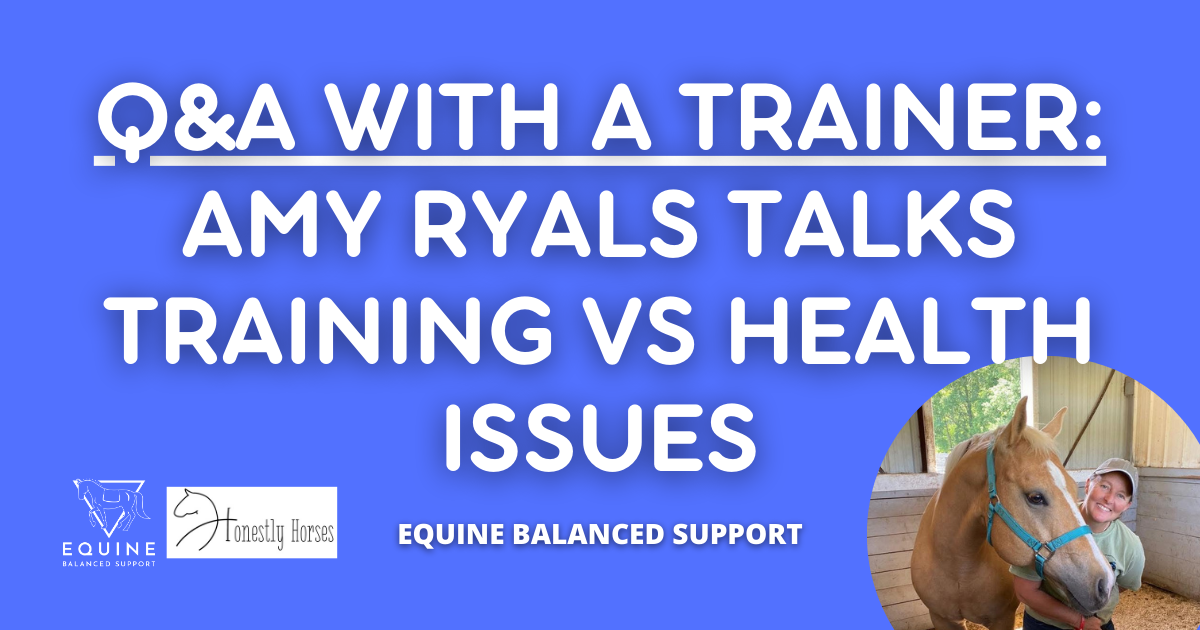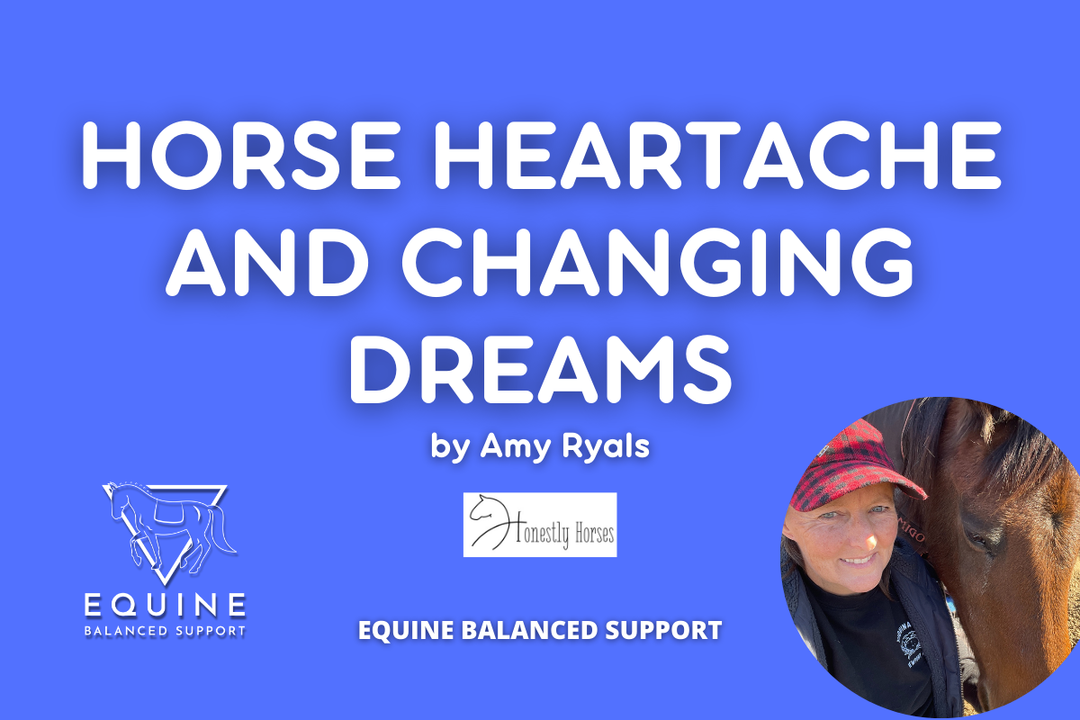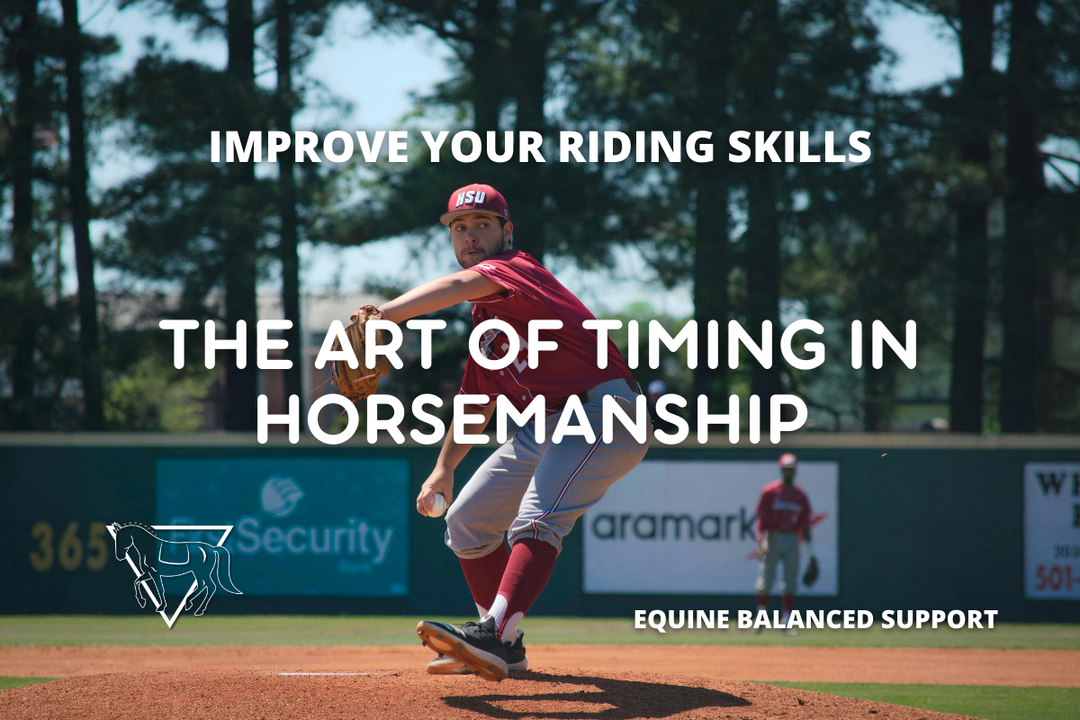Q&A with a Trainer: Amy Ryals talks Training vs Health Issues

How can I tell if my horse’s behavior is training related or a health issue?
This is a question that I have to address with, nearly, every horse that comes to me for training. When I get a horse for a tune up, it’s often because of some undesirable behavior. To begin, I think it’s important to state the obvious. A thorough veterinary exam should be done anytime we run into trouble with a horse, especially, when it’s out of character. Because I have had a great deal of horses come to me with neurologic illness, I make sure that my veterinarian includes certain checks in their exam for such. We also check teeth and do appropriate dental work, before I start any training. If there are any signs of physical pain, we might X-ray or ultrasound that area for a better idea of what might be going on. Often, we go through all the exam and we don’t find anything significant. So let's say, for the sake of answering this question, that your horse checks out A-okay.
The next step in my process is to address any saddle or bit fitting issues. Once we know that those are both comfortable and well fitted, we can move on to condition and proper carriage. This is where most issues with behavior actually come from. It’s common to see horses that have never learned to carry themselves. They are accustomed to being “propped up” or managed, in every way, by their rider. When this occurs, it leads to improper conditioning of muscle groups and thus, continual soreness throughout. I begin by assessing the horse’s overall structure. If they are low in the back, lacking hind end definition or have a bulging neck, on the underside, those are all good indicators that the horse isn’t using himself correctly.
I begin on the ground. Using specific ground pole and exercises, long lining (ground driving) and in-hand lateral work, I start to ask a horse to use the correct muscles. I may spend up to a month working on re-conditioning, just through groundwork. I also utilize our chiropractor and body workers to ensure that we are helping the horse be comfortable as we recondition. I also spend a little time each day just watching the horse move, when they are loose. This is where I look for any sign of discomfort. If they are reluctant to move downhill or look stiff, or I don’t see them lie down, I know that something isn’t quite right.
Once I have a horse working smoothly, and carrying themselves through our groundwork exercises, I start to ask them to carry me. We start simple, at a walk, and we work slowly. I was taught that the walk is the queen of all gaits, and that by mastering it, we will find fluidity in all other gaits. The trouble is, most of us, including me, find the walk to be boring! I have a 15-minute playlist on my phone that I chose especially for my walking warm-up. I picked songs, with a four-beat rhythm, that I can walk with, and it has really helped me be accountable to the walk. During my walk, I work on lateral flexion, collection and lengthening of stride, and moving the front and hind end, independently. By the time we step into the trot, the horse is supple, and responsive. This commitment to the walk, and proper warm-up, has eliminated most issues that I have found.
So, what if I do all this and I still have a horse that has issues? Here is where things can get pretty complicated. In the thirty years that I have been training horses I have only met two, who just couldn’t settle into what we were asking of them. We couldn’t make steady progress. Their owners were committed to their well-being and made the difficult decision to discontinue their training. As riders, it’s our job to help our horses be as comfortable as possible, in our work. It doesn’t matter if you trail ride or you compete at a high level, in some particular discipline. Learning to watch and listen to the subtle ways a horse tries to communicate with us is really the key. If I give a horse time and I pay attention, they will show me what they need. Most of the time, I simply have to condition properly and set them up for success. Then, I just try not to get in their way, as they offer the things I ask of them.






A true horseman and lifelong learner Amy has dedicated her life’s work to the horse. Her deep love and gratitude for them shows in everything she does and teaches. This sounds exactly like what I’ve heard!
Leave a comment